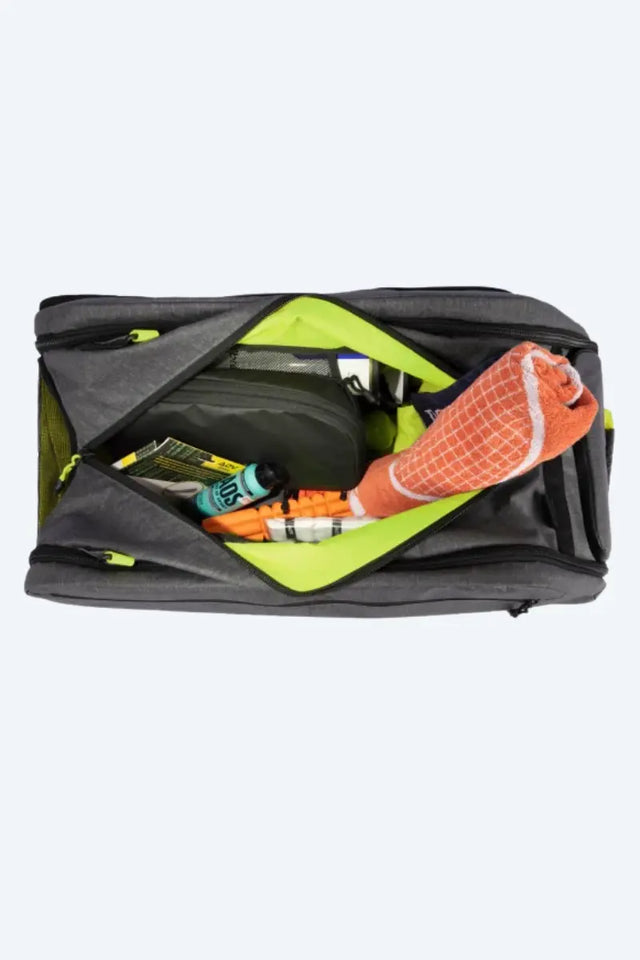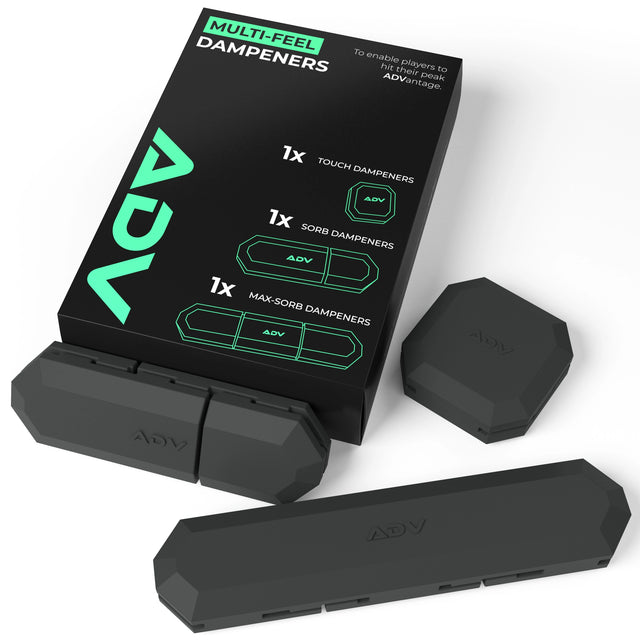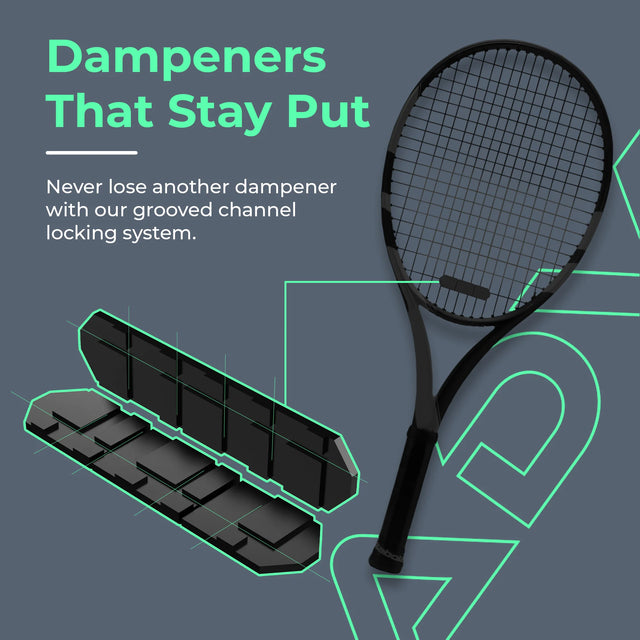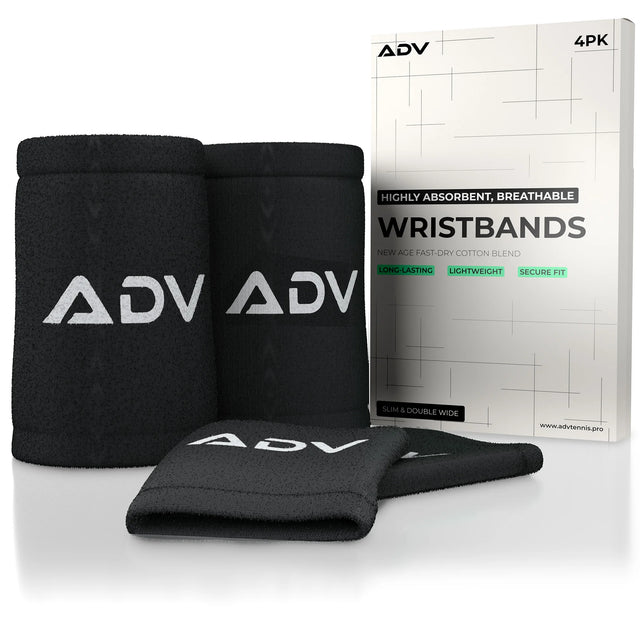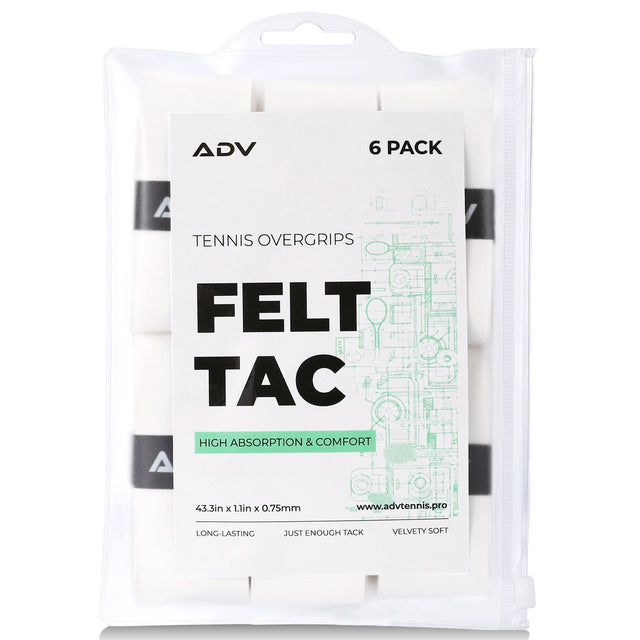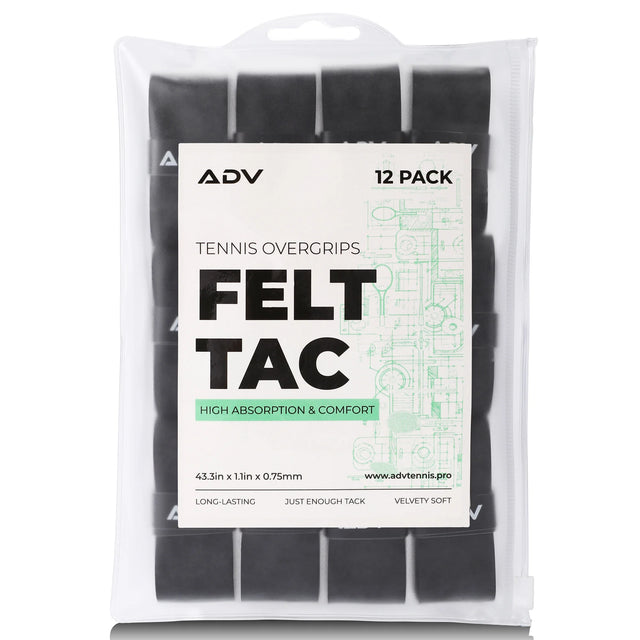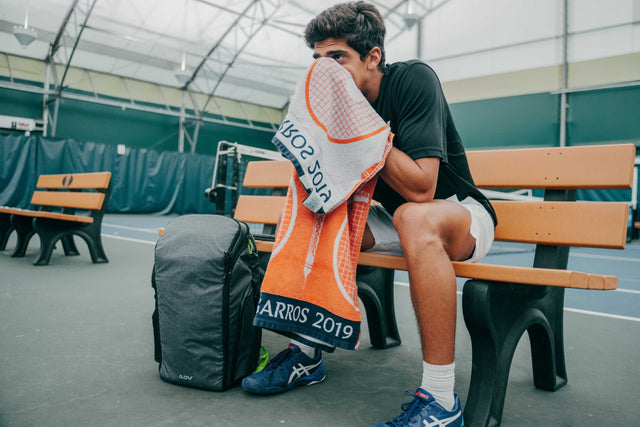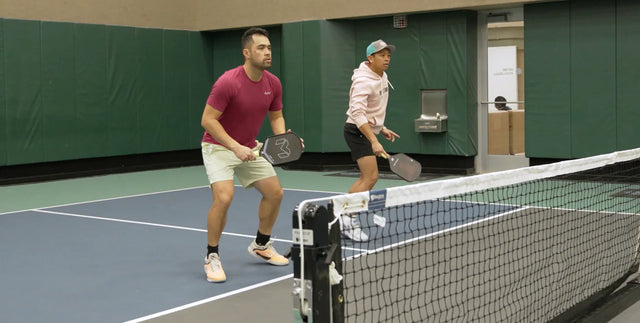Tennis Practice Equipment: Boost Your Skills With These Must-Have Tools
When it comes to improving your tennis skills, having the proper tennis practice equipment can make a big difference in how quickly and effectively you progress. Training without the right tools often leads to frustration and slower learning. Equipment designed specifically for practice helps players focus on key areas like control, power, and consistency. With the right gear, each training session becomes more productive, enabling you to refine your technique and address your weaknesses.
Essential Tennis Gear for Power, Control, and Comfort
Choosing the Best Tennis Racket
Picking the best racket for tennis players is one of the most important decisions when building your training setup. The right racket affects everything from shot precision to overall comfort during play. Players should consider factors such as weight, balance, and string pattern when selecting a racket that suits their skill level and playing style. A heavier racket might offer more power, while a lighter one provides better control and quicker handling. The grip size should also feel secure in your hand, allowing for natural movement without strain.
Shock Reduction
The impact of ball contact with the strings can sometimes cause unwanted vibrations that affect your shots and wrist comfort. This is why using a tennis dampener can be so beneficial. These small accessories are designed to absorb excess vibration, providing a smoother feel with every hit. Players who experience discomfort in their hands or arms often find relief when using these tools. A racket vibration absorber comes in various shapes and materials, allowing for different levels of shock absorption based on your preference. Adding one to your racket can help prevent strain over time, especially during long matches or intense practice sessions. Caring for your racket strings is just as important as selecting the right frame or grip. A tennis string dampener helps reduce string vibration, keeping your shots stable and minimizing the harsh feel of substantial impacts. In addition to that, using tension calibrators allows you to check if your string tension remains at the desired level. String tension affects how the ball responds when it meets the racket, so maintaining consistent tension ensures reliable performance.

Foundational Tennis Equipment for Beginners
Tennis Kits
Beginner kits are often designed to include the basic tools needed to get familiar with the game while making practice sessions more enjoyable and less intimidating. These starter sets typically feature soft training balls and easy-to-set-up nets, which allow new players to focus on developing skills at a comfortable pace. Many of these kits are thoughtfully put together to offer all-in-one solutions, so beginners can avoid the guesswork involved in choosing individual items.
Entry-Level Accessories
Effective tennis development begins with more than just a well‑strung racket: it requires a suite of foundational accessories that support technique, comfort, and efficient practice habits.
- Overgrips: These thin, replaceable layers are typically made from polyurethane blends that balance absorbency with tackiness, ensuring your hand remains anchored through fast-paced rallies or extended practice sessions. Unlike thicker replacement grips, overgrips preserve the original handle’s dimensions, allowing you to maintain a consistent feel while still customizing texture. When installed correctly—starting from the butt cap and overlapping each turn by about 1–2 mm—the overgrip creates a seamless surface free of gaps or ridges, reducing hotspots that can lead to blisters. Because they are relatively inexpensive and easy to swap out, beginner players can experiment with different levels of tack and thickness, finding the exact combination that suits their perspiration level and handling preferences. Tennis overgrips also serve as a visual cue for wear: as the material darkens and loses tack, it’s time for replacement, which helps preserve hand stability. For players practicing multiple times a week, rotating two or three overgrips in your bag allows for quick changes between drills, ensuring you always step onto the court with a fresh, slip-resistant grip support.
- Replacement Grips: While overgrips customize the feel of your handle, the primary replacement grip provides the foundational cushioning and structure that your hand contacts directly. Constructed from materials such as synthetic rubber compounds, perforated polyurethane, or genuine leather, replacement grips are thicker and offer longer‑lasting resilience than overgrips alone. Synthetic options emphasize moisture management and tack, often incorporating micro‑perforations that channel sweat away and improve breathability during intense exercise. Leather grips, revered for their durability and classic feel, require less frequent changing but demand more maintenance—occasional conditioning with leather care products keeps them supple and prevents cracking. Installing a replacement grip involves first stripping away the worn original and then applying double-sided tape to the handle to secure the new grip in place. Proper tension and overlap are crucial for avoiding wrinkles and maintaining uniform thickness, which directly impact your wrist alignment and power transfer. Beginners benefit from grips that strike a balance between softness and sufficient firmness to preserve precise racquet head control. While the initial installation may take some practice, mastering this process gives players greater autonomy over their equipment. Once fitted, a quality replacement tennis grip can last months under regular use, making it a worthwhile investment for those who log significant court time.
- Training Cones: Typically made from flexible PVC or rubberized plastics, these cones withstand repeated impacts from balls or rackets without shattering, and their bright colors (orange, yellow, or green) enhance visibility. Beginners use them to establish basic shapes—straight lines for sprint starts, zigzag paths for lateral movement, and square grids for multi‑directional drills—each designed to foster balance, quickness, and change‑of‑direction proficiency. By arranging cones at set intervals, players can internalize proper step lengths and court coverage angles. For instance, a 1.5-meter spacing cultivates efficient split-step timing, while tighter setups emphasize small-loss foot adjustments. These drills build foundational athleticism that directly translates to quicker recovery between shots and improved positioning. Cones also serve as props for more advanced exercises, such as shadow swings around a perimeter, to simulate dynamic point scenarios. Because cones are lightweight and nest easily, coaches and players can reconfigure courses in seconds, enabling varied drill progressions within a single session.
- Target Rings: By offering a defined visual goal, these rings channel a player’s focus toward consistency in ball placement, which is critical for developing strategic shot patterns. Placing a ring near the service box corner, for example, encourages hitting deep, angled serves that pull opponents off the court. Positioning rings at net height aids in perfecting volley depth and minimizing pop-ups. Beginners benefit from the immediate visual feedback: repeatedly missing a ring by a few centimeters highlights subtle adjustments needed in grip, swing angle, or ball toss. Target rings can be used individually for single‑point goals or clustered to form complex patterns, supporting progressive difficulty levels as skill grows. Their lightweight design makes repositioning seamless, and many sets include magnetic or clip attachments for quick installation on metal net posts.
- Ball Pickup Tubes: These cylindrical devices feature a slightly tapered opening lined with flexible prongs that grip and trap balls as you roll the tube over them. High‑grade plastic or aluminum constructions balance durability with lightness, and many models collapse telescopically for transport. By consolidating ten to twenty balls in a single sweep, pickup tubes save substantial time during repetitive drills, keeping practice focused on skill refinement rather than manual retrieval. Ergonomic handles or shoulder straps enhance comfort during longer sessions, while wide‑mouth designs accommodate fuzzy soft balls as well as standard pressurized ones. Some versions incorporate a release mechanism, such as a push‑button valve, so balls can be dispensed back onto the court one at a time for serve practice or rebound drills.
- Starter Training Guides: Starter training guides—whether printed booklets or digital subscription resources—provide structured roadmaps that anchor beginners’ practice routines. Created by seasoned coaches, these guides typically outline progressive lesson plans covering grip fundamentals, footwork patterns, stroke techniques, and basic tactical concepts. They often include detailed illustrations or video demos, breaking down complex movements into manageable steps. Accompanying practice schedules suggest warm‑up routines, drill rotations, and rest intervals, ensuring that physical conditioning and skill acquisition proceed in harmony.
With these nine entry‑level accessories, new players are well‑equipped to develop sound technique, maintain comfort, and streamline their on‑court routines.
Advanced Tennis Accessories for Comprehensive Training
Resistance Bands for Strength and Flexibility
Strength and flexibility play a major role in a tennis player’s performance, making resistance bands a smart addition to any collection of advanced tennis accessories. These bands are easy to use and provide targeted muscle engagement, allowing players to work on key areas like the shoulders, arms, and core. Consistent use of resistance bands helps build the strength required for more powerful strokes while improving flexibility for smoother movements.

Agility Ladders, Speed Cones, and Footwork Enhancement Tools
Movement on the court often determines whether a player can reach the ball in time or return it effectively. Using agility ladders and speed cones as training aids for tennis helps improve footwork, coordination, and quick directional changes. These tools challenge players to react faster and maintain better control over their positioning. Practicing footwork drills regularly with agility equipment also enhances balance and body control, making each step more purposeful and stable. Good footwork contributes to improved shot execution by positioning the player correctly for each swing.
Portable Practice Nets
Training effectively doesn’t always require access to a full tennis court. Portable practice nets for tennis enable players to hone their skills in smaller spaces, such as driveways, backyards, or parks. These nets are easy to set up and take down, providing flexibility for practice at different locations. Using portable nets helps reinforce basic techniques such as volleys, serves, and groundstrokes, giving players more opportunities to stay active and refine their game outside of formal lessons. They also encourage frequent practice by removing the barrier of needing a dedicated court.
Creating a Purposeful and Progressive Training Routine
Assembling Must-Have Tennis Gear for Every Skill Level
Assembling a collection of essential tennis gear is crucial for creating a training plan that fosters long-term growth. The proper selection of tools should match your current abilities while offering room for progress as your skills improve. Beginners often benefit from lightweight rackets, soft balls, and basic accessories that focus on technique and comfort. Intermediate players may require additional equipment, such as practice nets, cones, or vibration dampeners, to refine their movements. Advanced athletes can add specialized equipment, including tennis ball machines or string testers, to support high-intensity drills.
Using Training Aids
Creating well-organized practice sessions is crucial for maximizing the effectiveness of your tennis training equipment. Here are key strategies:
- Identify Your Goals: Before you step onto the court, crystallize exactly what you intend to accomplish. Rather than approaching practice with an undefined desire to “get better,” articulate specific targets, such as achieving a 70% first‑serve percentage, improving lateral footwork speed by half a second, or hitting 80% of your groundstrokes inside the service line. Frame these targets according to the SMART criteria: Specific (e.g., “return 20 out of 30 serves cross‑court”), Measurable (using ball‑tracking apps or manual tallying), Achievable (aligned with your current skill level), Relevant (focused on your competitive needs), and Time‑bound (set for this session or the week). Having discrete objectives channels your mental energy toward the most impactful areas, preventing aimless rallying that yields little insight.
- Set Time Limits for Each Drill: Time‑boxing individual exercises ensures that no single component monopolizes your session and helps maintain mental freshness. Allocate blocks—say, 15 minutes for first‑serve practice, 10 minutes for cross‑court rallies, and 8 minutes for agility ladder drills—based on the relative importance and physical intensity of each task. Use a visible court timer or a smartwatch alarm to clearly mark the start and end of each segment. When the buzzer sounds, move on without hesitation. This disciplined structure stops you from over‑investing in comfortable routines at the expense of weaker areas.
- Incorporate Rest Periods: Scheduled breaks between high‑effort drills are essential for both physiological recovery and cognitive processing. After an intense 10-minute serving segment, a 2- to 3-minute active rest, such as walking slowly, performing dynamic stretches, or sipping water, allows heart rate and muscle pH levels to return to normal. This prevents lactic acid accumulation that diminishes stroke crispness and footwork agility. During these interludes, take brief mental pauses: review what went well in the preceding drill, note any technical adjustments needed, and visualize proper execution.
- Track Your Progress: Data collection is the linchpin of iterative improvement. Use wearable devices—such as GPS-enabled smartwatches or tennis-specific sensors—that log metrics like swing speed, distance covered, and shot count. For serve and rally drills, use ball‑machine counters or manual tally sheets to record successful hits versus misses within each time block. Utilize digital practice logs or a dedicated notebook to jot down observational notes: fluctuations in footwork timing, patterns of inconsistent contact, or mental lapses during pressure simulations.
- End with Review and Cool Down: Concluding your practice with a structured cooldown and reflection solidifies learning and prepares your body for recovery. Dedicate the final 10‑15 minutes to light aerobic activity—jogging or skipping ropes—to gradually lower your heart rate and flush metabolic byproducts from your muscles. Follow with static stretching focused on the major muscle groups engaged during the session: hamstrings, quadriceps, hip flexors, shoulders, and forearms. Hold each stretch for 20–30 seconds, breathing deeply to help relax the tissue. Meanwhile, conduct a brief performance debrief: revisit the goals you set at the outset, compare them to the tracked outcomes, and note any discrepancies.
A goal‑driven structure powered by the right training aids transforms your practice sessions from random hitting into strategic stepping stones, accelerating both technical mastery and physical conditioning.

Building a successful tennis practice routine requires more than just dedication and hard work; it also depends on having the right tennis practice gear that suits your specific needs. The equipment you use becomes a partner in your development, offering the support and feedback necessary to fine-tune your skills. Choosing gear that aligns with your playing style enables more effective learning, providing each practice session with purpose and direction.

